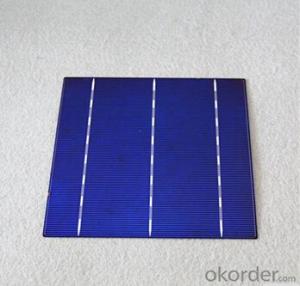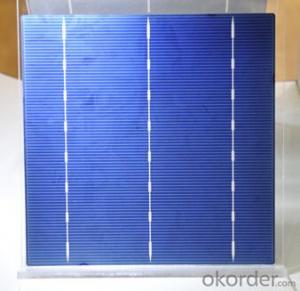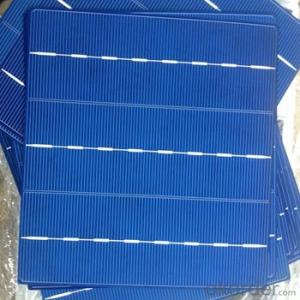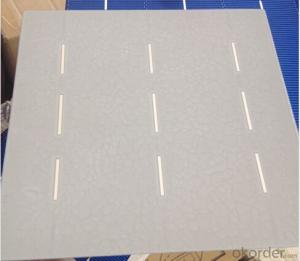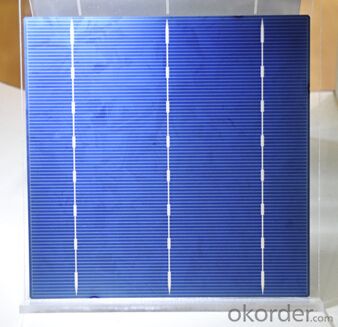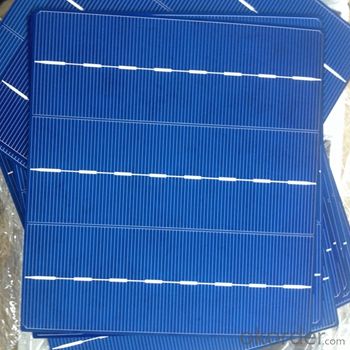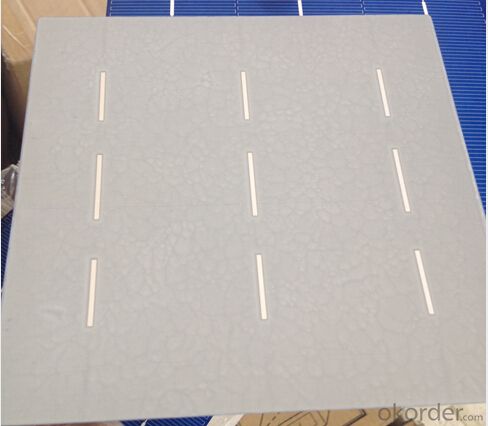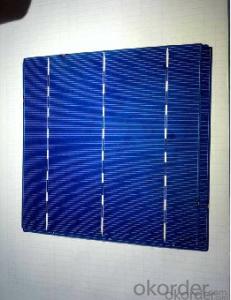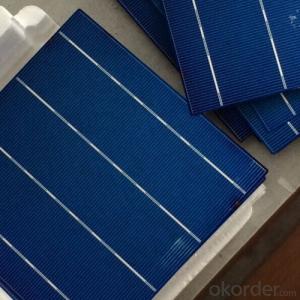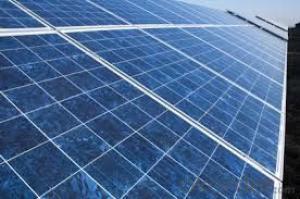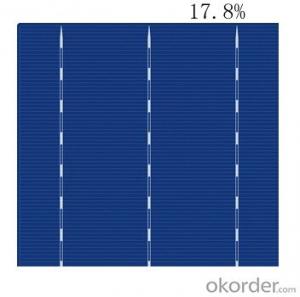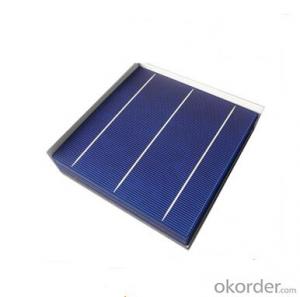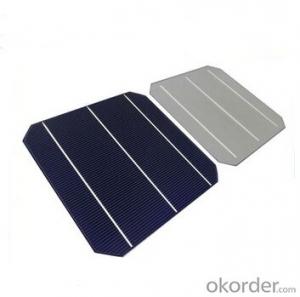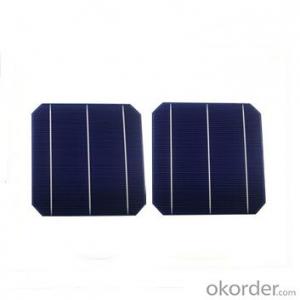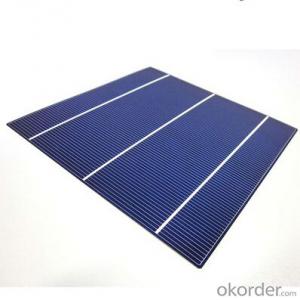Inkjet Printed Solar Cells - China Wholesale A Grade High Efficiency Polycrystalline Solar Cells with Low Price
- Loading Port:
- Shanghai
- Payment Terms:
- TT or LC
- Min Order Qty:
- 5000 pc
- Supply Capability:
- 8000000 pc/month
OKorder Service Pledge
OKorder Financial Service
You Might Also Like
Polycrystalline Silicon Solar Cells:
Solar cells is made by solar wafer, it has three categories of solar cell right now, monocrystalline polycrystalline and thin film,These cells are entirely based around the concept of ap-n junction, which is the critical part of solar module, it is the part that can convert the light energy into electricity, the thickness is from 180um to 200um, with even busbars to conduct electricity, textured cell can decrease diffuse reflection; they are often electrically connected and encapsulated as a module. Photovoltaic modules often have a sheet of glass on the front (sun up) side, allowing light to pass while protecting semiconductor wafers from abrasion and impact due to wind-driven debris, rain, hail, etc. Solar cells are also usually connected in series in modules, creating an additive voltage. Connecting cells in parallel will yield a higher current;With high quality and stable quality. Our Cells can greatly improve the performance of Solar Modules.
Polycrystalline Silicon Solar Cells Advantage:
• High efficiency and stable performance in photovoltaic conversion.
• Advanced diffusion technique ensuring the homogeneity of energy conversion efficiency of the cell.
• Advanced PECVD film forming, providing a dark blue silicon nitride anti-reflection film of homogenous color and attractive appearance.
• High quality metal paste for back surface and electrode, ensuring good conductivity, high pulling strength and ease of soldering.
• High precision patterning using screen printing, ensuring accurate busbar location for ease with automatic soldering a laser cutting.
Applications of Polycrystalline Solar Cells
Assemblies of photovoltaic cells are used to make solar modules which generate electrical power from sunlight, as distinguished from a "solar module" or "solar panel". A solar array generates solar power using solar energy.
Packaging & Delivery of Polycrystalline Solar Cells
Carton Box Package and Deliver by air. It should be noticed that it should be avoid of water, sunshine and moist.
Specification:
Mechanical data and design |
Format - 156 mm × 156 mm ± 0.5 mm |
Thickness- - 200 μm ± 20 μm |
Front (-) - 1.4 mm bus bars (silver),blue anti-reflection coating (silicon nitride) |
Back (+) - 2 mm wide soldering pads (silver) back surface field (aluminium) |
Temperature Coefficient of Cells |
Voc. Temp .coef.%/K -0.364%/K |
Isc . Temp .coef.%/K +0.077%/K |
Pm. Temp. coef.%/K -0.368%/K |
Electrical Characteristic |
Efficiency (%) Pmpp (W) Umpp (V) Impp (A) Voc (V) Isc (A) |
18.00% 4.380 0.538 8.141 0.634 8.740 |
17.90% 4.356 0.538 8.097 0.634 8.725 |
17.80% 4.331 0.537 8.065 0.633 8.710 |
17.70% 4.307 0.536 8.035 0.632 8.695 |
17.60% 4.283 0.535 8.006 0.631 8.680 |
17.50% 4.258 0.534 7.974 0.630 8.665 |
17.40% 4.234 0.533 7.944 0.629 8.650 |
17.30% 4.210 0.532 7.914 0.628 8.635 |
17.20% 4.185 0.531 7.88 -- 0.627 -- 8.620 |
17.10% 4.161 0.530 7.851 0.626 8.605 |
17.00% 4.137 0.529 7.820 0.625 8.590 |
Intensity Dependence |
Intensity [W/m2] Isc× [mA] Voc× [mV] Pmpp |
1000 1.00 1.000 1.00 |
900 0.90 1.000 0.90 |
800 0.80 0.99 0.80 |
500 0.50 0.96 0.49 |
300 0.30 0.93 0.29 |
200 0.20 0.92 0.19 |
IV Curve

Solar Panel Images:
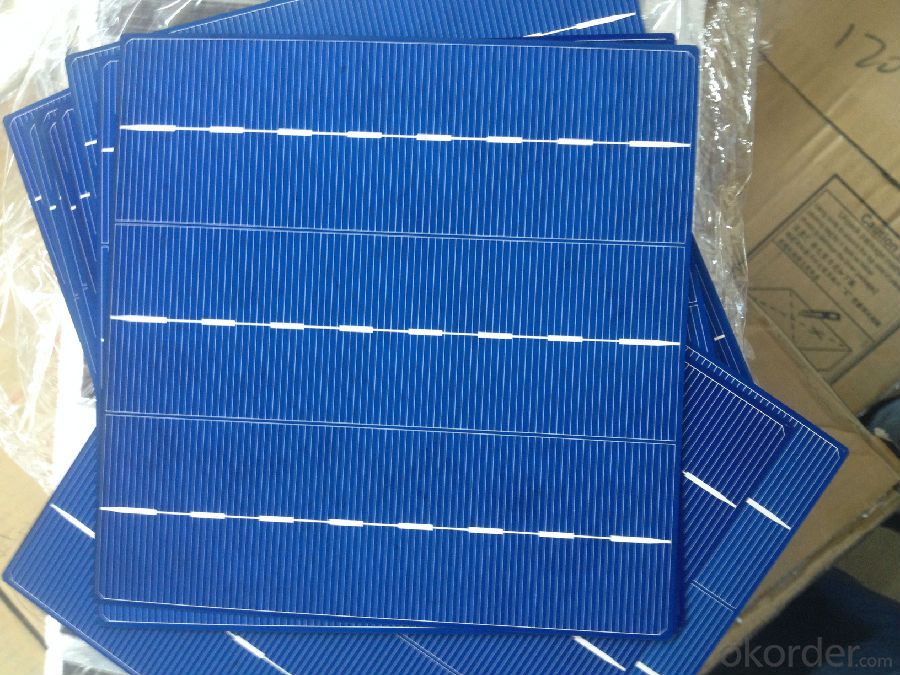
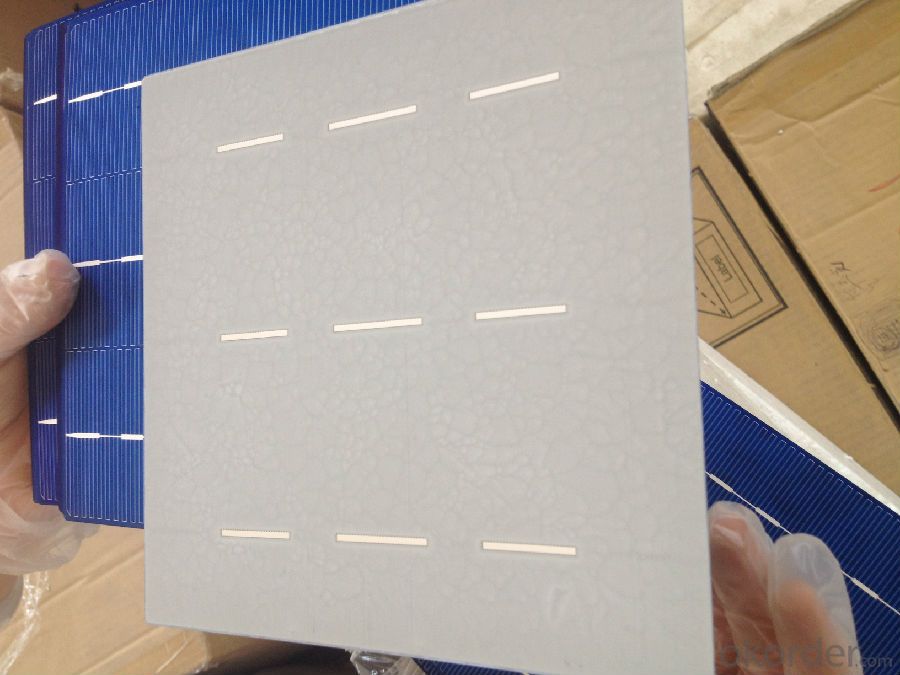
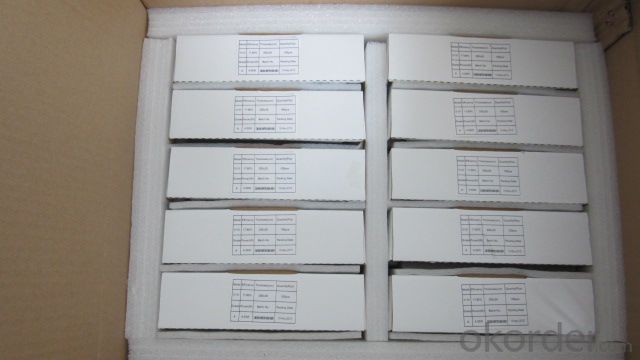
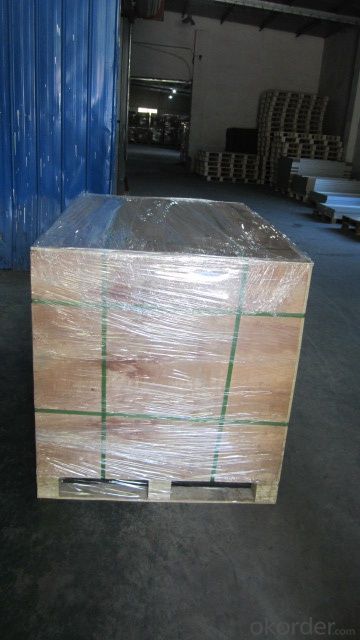
FAQ
We have organized several common questions for our clients,may help you sincerely:
①What price for each watt?
It depends on the efficiency of the solar cell, quantity, delivery date and payment terms.
②How long can we receive the product after purchase?
In the purchase of product within three working days, We will arrange the factory delivery as soon as possible. The pecific time of receiving is related to the state and position of customers.Commonly 7 to 10 working days can be served.
③Can you provide the peripheral products of the solar panels, such as the battery, controller, and inverter? If so, can you tell me how do they match each other?
Yes, we can, we have two companies for solar region, one is CNBM International, the other is CNBM engineering Co.
We can provide you not only the solar module but also the off grid solar system, we can also provide you service with on grid plant.
④What is your warranty of solar cell?
Our product can promise lower than 0.3% open box crack, we support claim after opening the box if it has crackm color difference or sth, the buyer should give pictures immediately, we can not accept the claim after the solar cell has assembled to solar panel.
• Timeliness of delivery
• ⑤How do you pack your products?
We have rich experience on how to pack the solar cell to make sure the safety on shipment, we could use wooden box or pallet as buyer's preference.
⑥ Can you do OEM for us?
Yes, we can.
Brief introduction of Sun Solar Cell Power System
Sun solar cell power systems, also known as solar power systems, solar energy is converted to electrical energy through the solar charge controller to power the load, while to the battery pack.
Solar power generation systems, also known as solar power systems, solar energy is converted to electrical energy through the solar charge controller to power the load, when to charge the battery; in the absence of sunlight through the solar charge controller from the battery to the DC load, but also directly to the battery while the individual inverter power supply, through a separate inverter is inverted into AC to AC load powered by.
Solar power system consists of solar batteries, solar controller, battery (group) composition. If the output power to 220V AC or 110V, also need to configure inverter.
Classification of Sun Solar Cell Power System
Solar power generation into off-grid power systems and grid systems:
1. Off-grid power systems. Mainly consists of solar modules, controller, battery composition, to an AC load, also need to configure AC inverter.
2. DC power generation system is generated through solar modules and grid-connected inverter converts AC power into the electricity grid in line with the requirements of direct access to the public grid after this. And power generation systems have centralized large-scale power plants are generally national grid station, the main feature is the power can be directly delivered to the grid by grid power to the unified deployment of the user. But this power plant investment, long construction period, large area, the development of a relatively large degree of difficulty. The small and decentralized power generation systems, especially BIPV power system, due to the small investment, quick construction, small footprint, large policy support, etc., is the grid of the mainstream.
- Q: Can solar cells be used to power remote monitoring systems?
- Yes, solar cells can be used to power remote monitoring systems. Solar cells convert sunlight into electricity, providing a reliable and sustainable source of power for monitoring devices located in remote or off-grid areas where traditional power sources are not available or feasible. This makes solar cells an ideal solution for powering remote monitoring systems.
- Q: What is a monocrystalline solar cell?
- A monocrystalline solar cell is a type of solar panel that is made from a single crystal structure, typically silicon. It is known for its high efficiency and sleek, black appearance. The single crystal structure allows for better electron flow, resulting in greater energy conversion from sunlight into electricity.
- Q: Can solar cells be used on curved surfaces?
- Yes, solar cells can be used on curved surfaces. Flexible solar cells have been developed that can conform to various shapes, allowing them to be installed on curved surfaces such as buildings, vehicles, or even clothing.
- Q: What is the role of solar cells in powering outdoor lighting?
- Solar cells play a crucial role in powering outdoor lighting as they convert sunlight into electricity. This renewable energy source is harnessed by solar cells installed on outdoor lighting fixtures, allowing them to operate without the need for grid electricity. Solar cells capture sunlight during the day and store the energy in batteries, which is then used to power the outdoor lights during nighttime. This sustainable solution helps reduce carbon emissions, lowers energy costs, and provides reliable lighting in outdoor spaces, even in remote areas where electrical infrastructure may be limited.
- Q: How do solar cells handle snow or ice buildup?
- Solar cells are designed to handle snow or ice buildup by being installed at an angle, which allows for the snow or ice to slide off. Additionally, the dark surface of solar cells tends to absorb sunlight and heat, which can help melt any accumulated snow or ice.
- Q: Can solar cells be integrated into building materials?
- Yes, solar cells can be integrated into building materials. Building-integrated photovoltaics (BIPV) is a growing trend where solar cells are embedded into roofing materials, windows, facades, and other building components. This integration allows for the generation of electricity while maintaining the aesthetics and functionality of the building.
- Q: How are solar cells connected in a photovoltaic system?
- Solar cells are connected in a photovoltaic system in series or parallel configurations to generate the desired voltage and current output.
- Q: What is the impact of snow accumulation on solar cells?
- Snow accumulation on solar cells can have a negative impact on their performance and efficiency. The layer of snow covering the cells prevents sunlight from reaching the surface, reducing the electricity generation capacity. Additionally, the weight of the snow can potentially damage the cells or the supporting structure. Regular cleaning or tilting of the panels can minimize the impact and ensure optimal solar energy production.
- Q: I would like to use a ppt to show how solar cells can work in a power generation factory, can anybody share some useful information with me?
- For a ppt, I think you should start with the definition of solar cells to give a basic introduction of solar cells.
- Q: How do solar cells perform in regions with high levels of dust and sandstorms?
- Solar cells may experience decreased performance in regions with high levels of dust and sandstorms. The accumulation of dust particles on the surface of solar panels can reduce their efficiency by blocking sunlight and reducing the amount of energy they can generate. Regular cleaning and maintenance of solar panels are essential in such environments to ensure optimal performance. Additionally, advancements in solar panel technology, such as anti-soiling coatings, are being developed to mitigate the impact of dust and sandstorms on solar cell performance.
Send your message to us
Inkjet Printed Solar Cells - China Wholesale A Grade High Efficiency Polycrystalline Solar Cells with Low Price
- Loading Port:
- Shanghai
- Payment Terms:
- TT or LC
- Min Order Qty:
- 5000 pc
- Supply Capability:
- 8000000 pc/month
OKorder Service Pledge
OKorder Financial Service
Similar products
Hot products
Hot Searches
Related keywords
